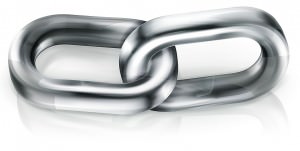The concept of Google Places Optimization has been around for many years. People try to figure out the mysterious algorithms that search engines use to index web content. They think that if they can figure out exactly how the rank is calculated, they can optimize their website based on these criteria. Unfortunately, the algorithm is a trade secret. In addition, search engine companies often change the algorithm to discourage people from figuring out what formula is used. Even so, there are basic Google Places Optimization techniques that do not change because they make up the foundation of Google Places Optimization. Read the following article for basic Google Places Optimization techniques and Optimize Your Website that have stood the test of time.
Google Places Optimization techniques and Optimize Your Website
 Keywords are important, but that does not mean that you should overload your page with keywords without any logic to it. This is called keyword stuffing, and search engines flags this as a “black hat” strategy that will affect your website rank negatively. Keywords must be used in well-written context that is helpful. If keywords are used without the support of any content, the website is useless to users and search engines can demote your website.
Keywords are important, but that does not mean that you should overload your page with keywords without any logic to it. This is called keyword stuffing, and search engines flags this as a “black hat” strategy that will affect your website rank negatively. Keywords must be used in well-written context that is helpful. If keywords are used without the support of any content, the website is useless to users and search engines can demote your website.
You can also use keywords in the file names of your webpages. Use a single word or use an underscore to keep words in a key phrase separated. Search engine crawlers will index your file names and will consider these words highly relevant because they represent the content of your page.
Search engines can only understand text characters. Elements like images are not recognized and will not be indexed. So, regardless of how relevant that image is, it will be wasted if you do not include an “alt” attribute in the image tag. Use good descriptive words that explain what the image is. These words will be indexed and will be counted in your website’s rank.
As you writing content for your website, use keywords in headline tags. Search engines consider these as indicators for what the paragraphs are all about. Use key phrases here that sum up your content. If you have sections to your content, use keywords in your sub-headings.
Be selective in how you phrase the meta title and description tags of your website. Search engines use the information in these two tags to create an entry for your website in the search results. Keep in mind that millions of web users can potentially see that entry. So you should pick the words that you are going to use in the title carefully.
Look beyond your own circle for other keywords that are relevant. Visit the websites of your competitors and see what is written there. Do a few sample searches and see who comes up at the top. Look through the websites that appear at the top of the page, and evaluate their effectiveness. See how they incorporate the keywords into their natural content.
If you apply these suggestions, you can Optimize Your Website ranking gradually. Be patient with the results because improvement will not happen overnight. Just be patient, and you will see your website get closer to the top before you know it.